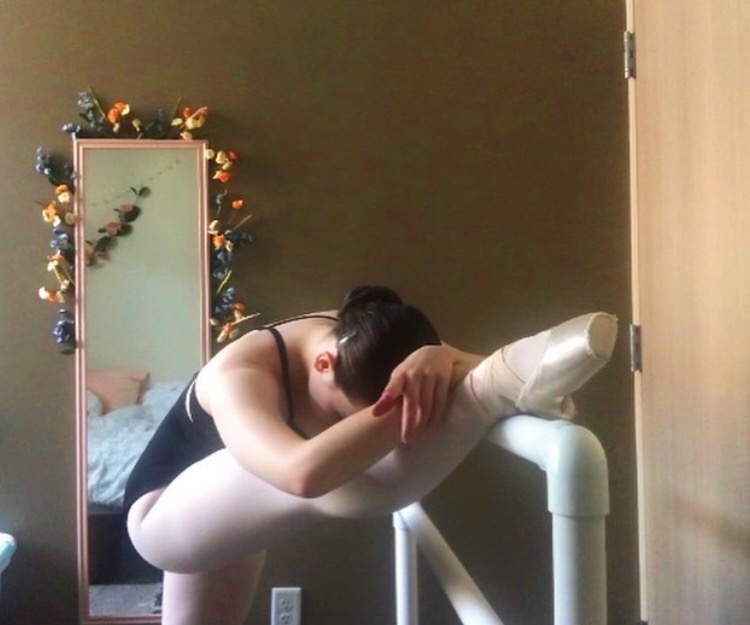
CSU junior dance student, Abby Allison practices her ballet technique on a portable ballet barre made by the CSU Scene Shop.
Thirty-seven CSU dance majors now have a portable ballet barre at home, thanks to Rams helping Rams.
Since the 19th century, barre work has been an integral part of ballet technique. The ballet barre, typically crafted from wood, metal, or plastic, aids dancers with balance and stability as they perform a rigorous set of training exercises. These barres are usually a permanent fixture in studios and necessary for the development of a dancer.
Though movement patterns vary based on teaching methodology, approach, and student skill level, barre work functions to warm and prepare the body for even more complex movements completed during rehearsal and performance.
A standard portable ballet barre is 42″ tall and 6′ across, and in non-COVID times, one barre accommodates up to four dancers. During the pandemic, the School of Music, Theatre, and Dance has worked with the CSU Pandemic Preparedness Team on dance-specific protocols and determined that dance students would require 12 feet of personal working space.
“As you can see, the math for dancers and barres does not quite add up,” said Madeline Harvey, assistant professor of dance at CSU. “Our COVID policies necessitate that some dance classes use a hyflex teaching model where classes are divided in half, and students alternate face-to-face days with online days. We also want to provide barres for students who are taking class from home if they are experiencing symptoms, self-isolating or quarantining,” she added.
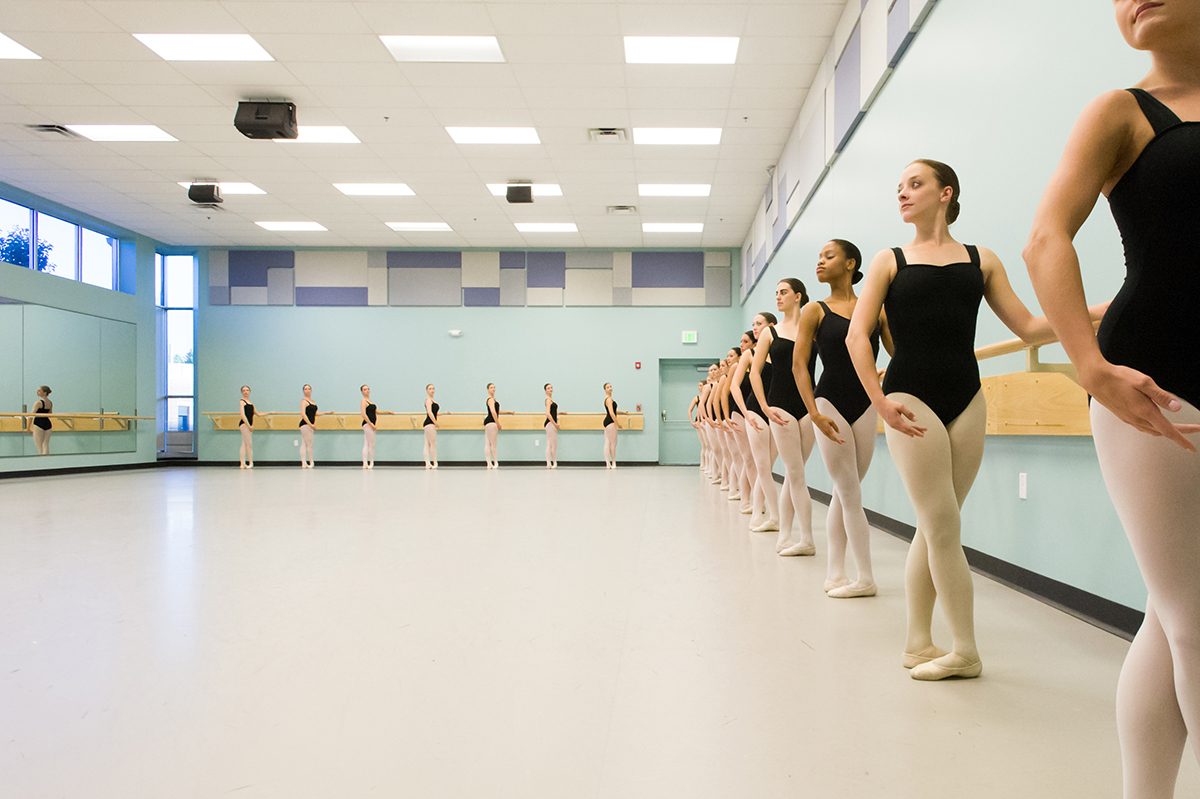
Ballet students warm up at the barre in one of the dance studios at the University Center for the Arts (archive photo pre-COVID).
Personal ballet barres
The pandemic has created heightened complications since March for the performing arts, where daily face-to-face interaction is the prevalent structure. Colorado State University continues to focus on delivering a meaningful education and experience to students. The School of Music, Theatre, and Dance production manager and technical director, Steven Workman, explains how the school recognized right away that teaching and learning would look different but did not have to be subpar.
“We were going to have to invent new ideas and be more creative to establish a solid curriculum,” said Workman. “In that spirit, Madeline Harvey thought of a great way to help our dance students, who could not be in the classroom, have what they need to practice and learn at home.”
Harvey brought the idea for a cost-effective portable PVC ballet barre to Workman, who said it was “a no-brainer” for the University Center for the Arts’ scene shop to produce the kits. “Whenever there is an opportunity to help the education of our students, it is all hands on deck,” he said, explaining how work-study and practicum students rolled up their sleeves to help their fellow students.
With the full support of the scene shop, the project took under a week from material purchase to construction to delivery of several dozen suitable barre kits.
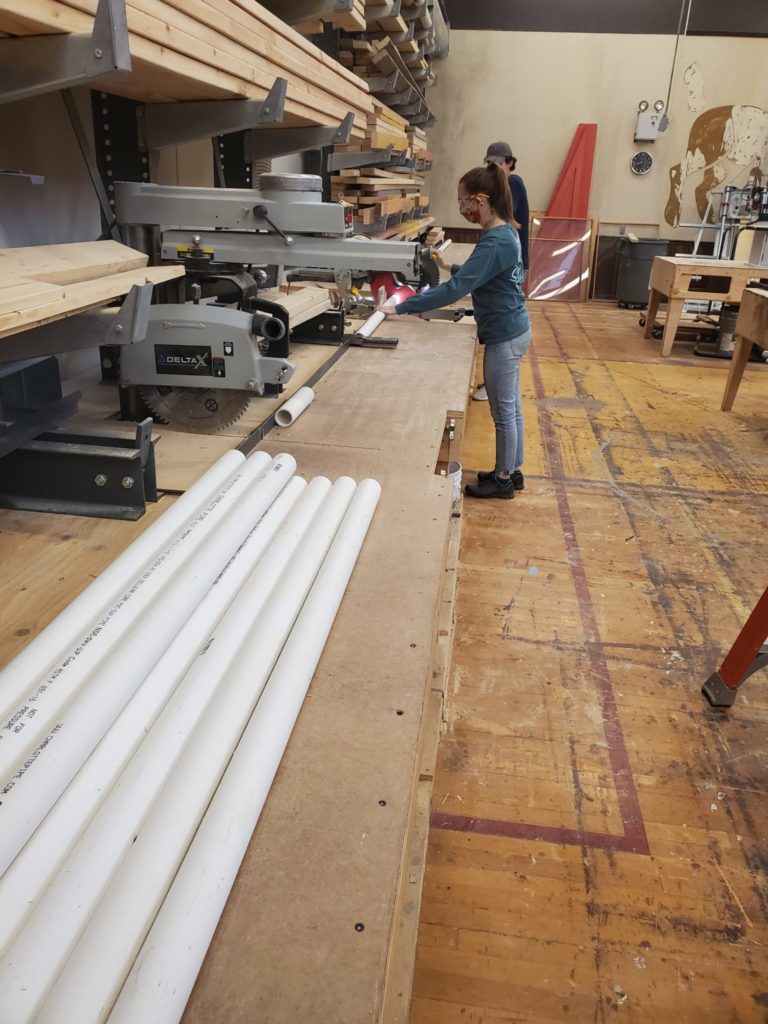
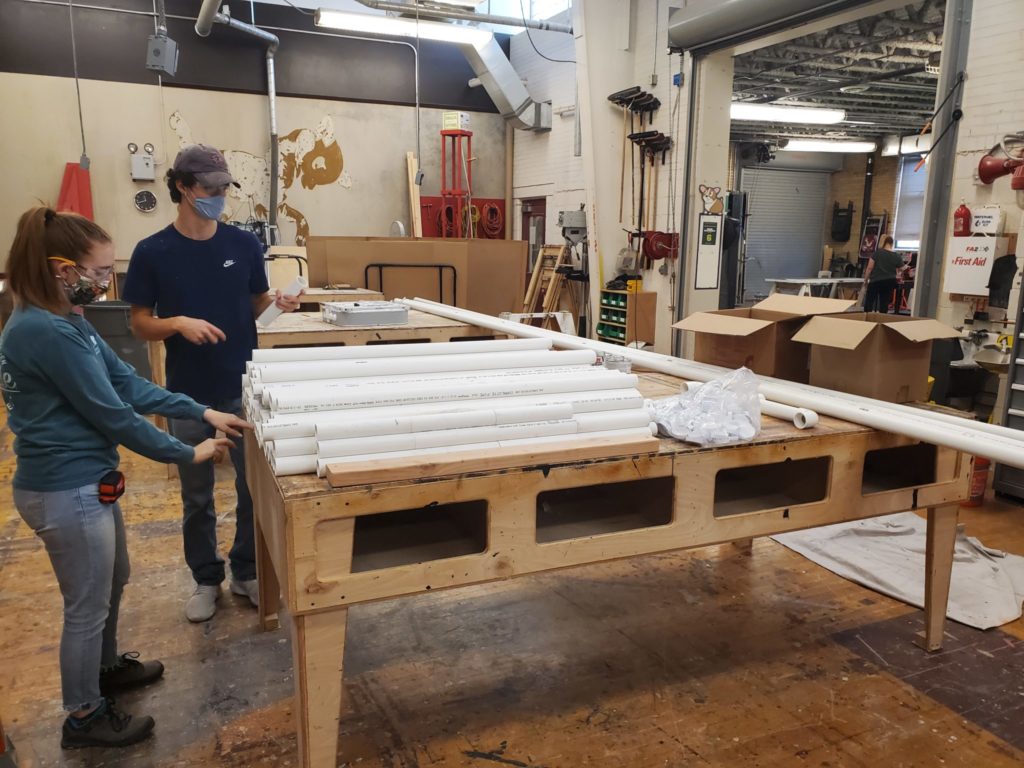
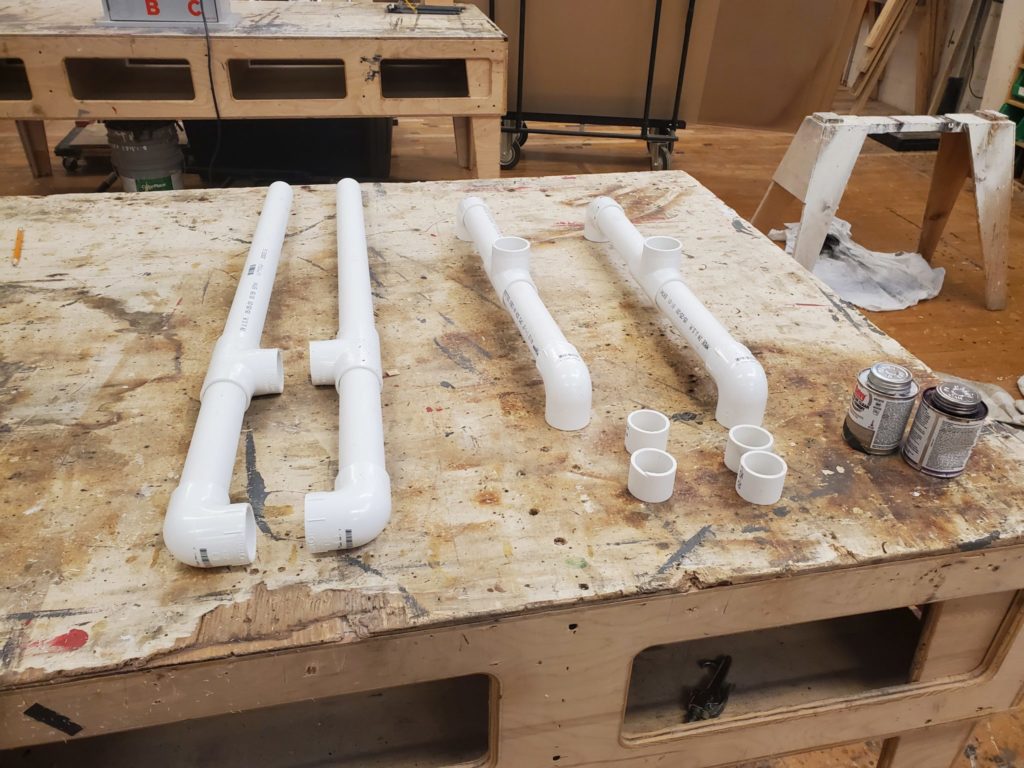
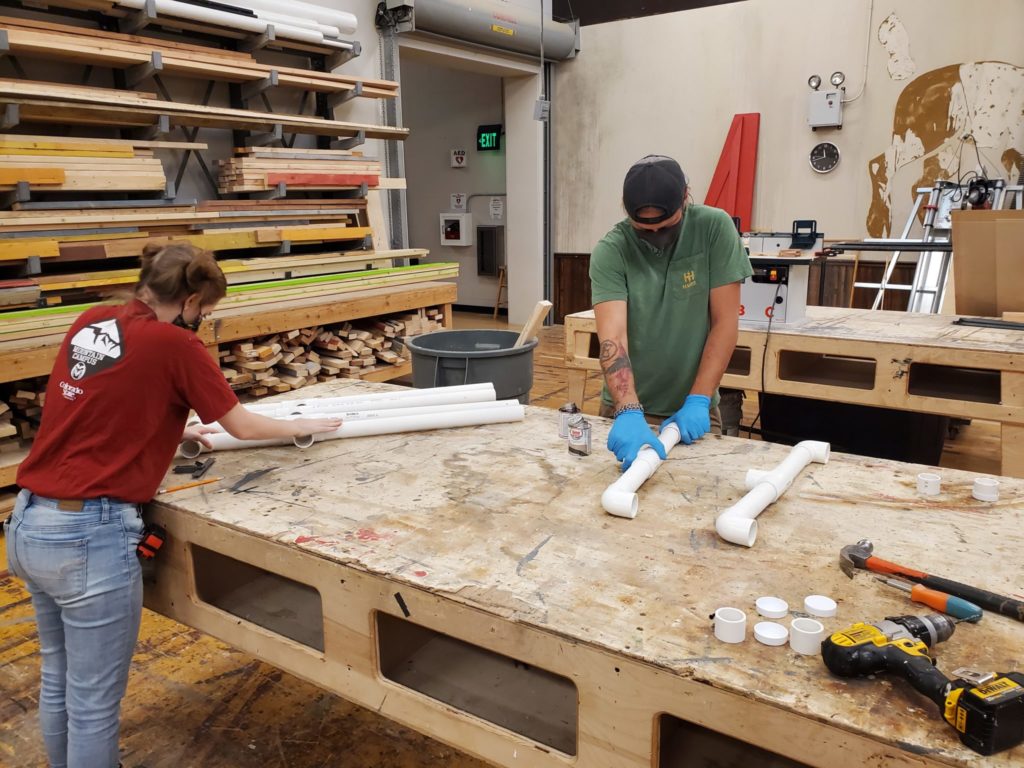
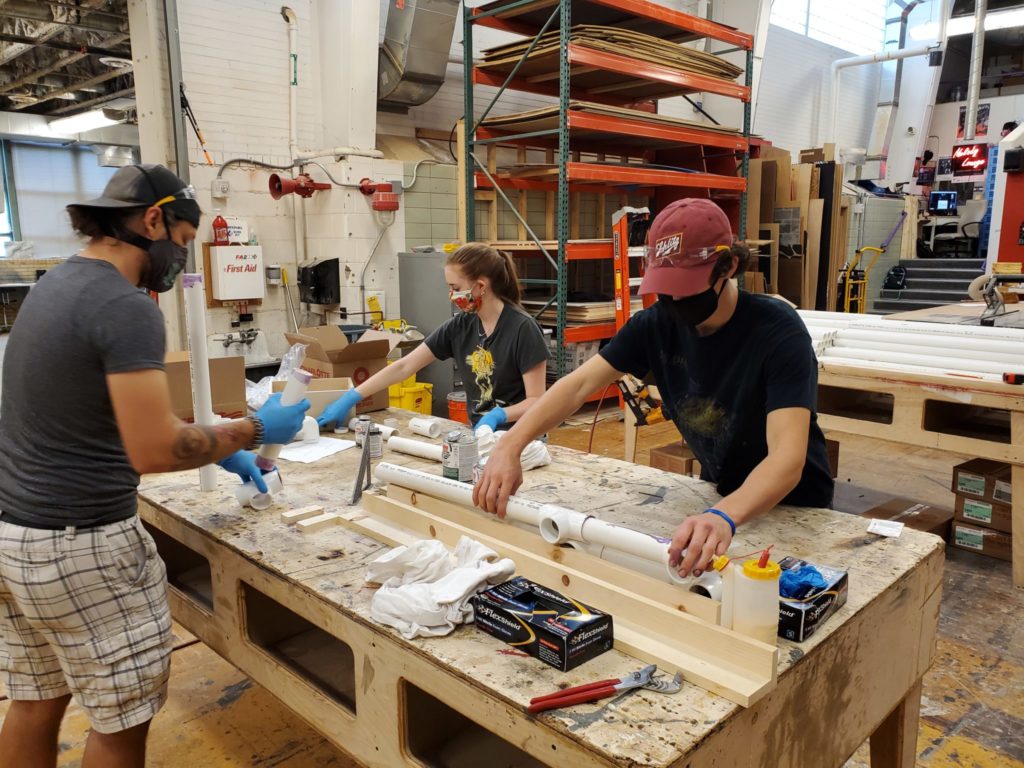

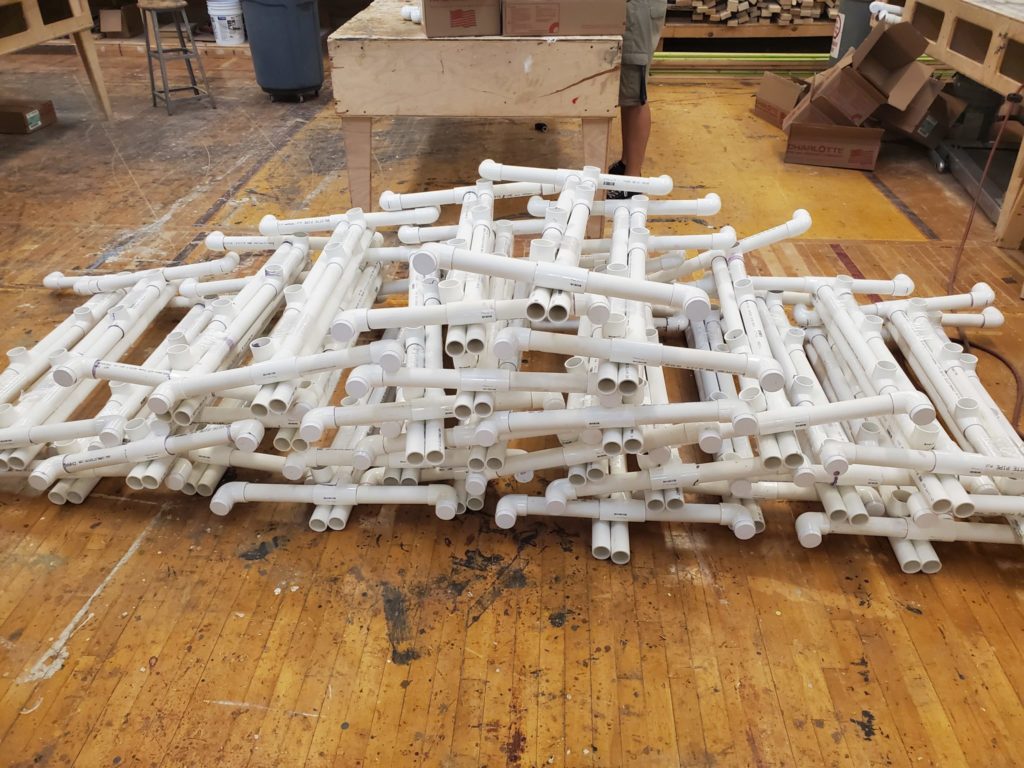
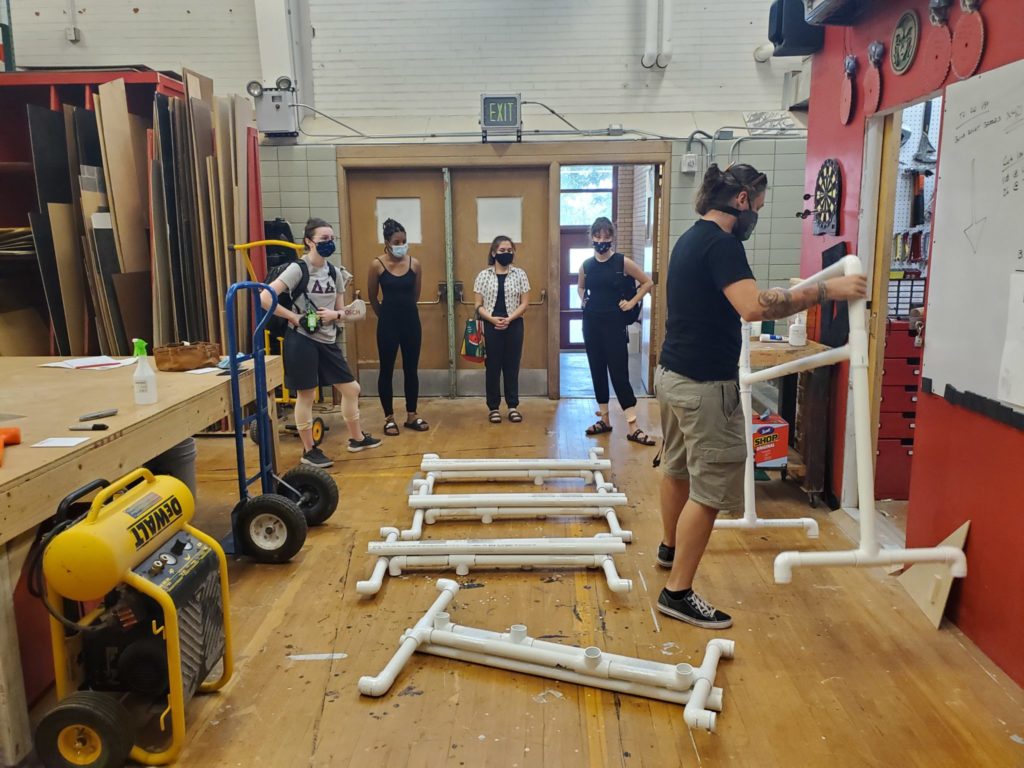
CSU Theatre work-study and practicum students, led by master carpenter, Johnie Rankin, construct more than three dozen portable ballet barres.
Training during the pandemic
Because of the barres, Harvey’s students have the opportunity to continue developing strength, flexibility, proper mechanics, dynamics, endurance, and artistry, even from home. Her students agree.
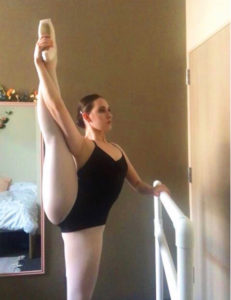
“A barre is meant to take the place of your partner’s hand,” explained junior dance student, Abby Allison. “In a time when we are all separated and cannot dance as partners, having these barres allows us to continue training as we would in the studio. It makes focusing on technique a lot easier when you’re not holding onto the wall.”
Sophomore dance major Elliot Benson had fun adding a little flair to his barre but is equally serious about developing technique.
“Having access to a barre at home is even more critical than ever now that the pandemic has severely limited our access to practice spaces and studios,” said Benson. “Much of the key technique in ballet is developed when practicing regularly at the barre. As athletes, we must stay in shape for classes, rehearsals, performances, and even work with professional dance companies.”
Benson feels lucky to have access to the small barre. “I can practice in my dorm room at any time [and] it’s something I can utilize after college in a future apartment or small house.”
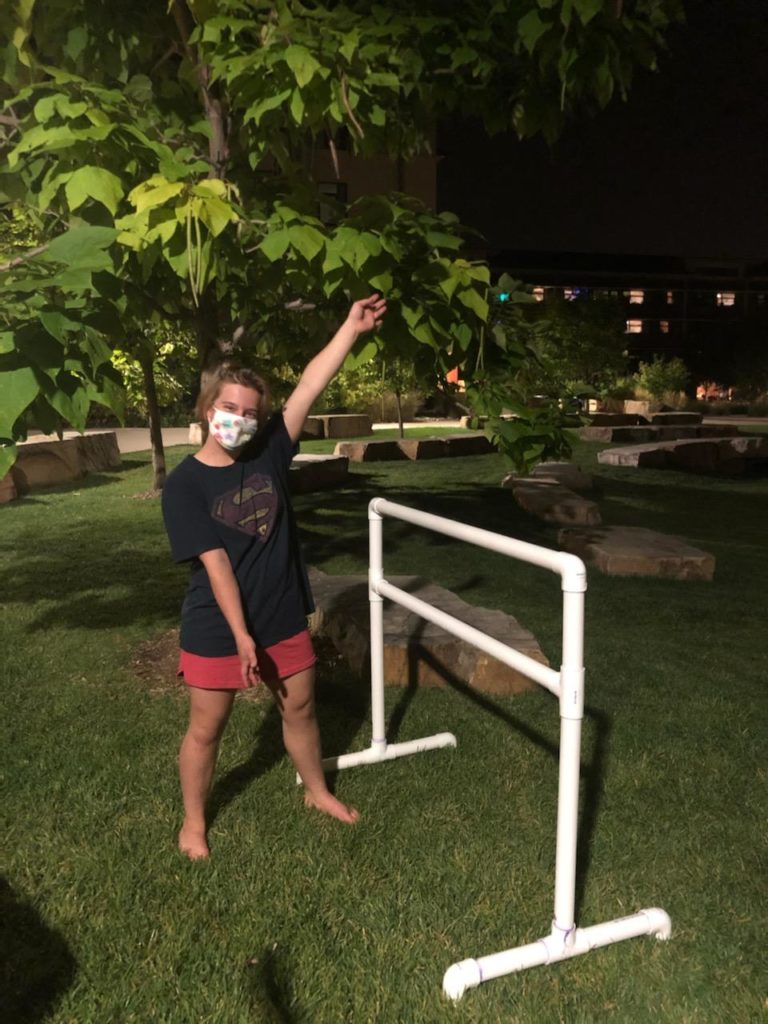
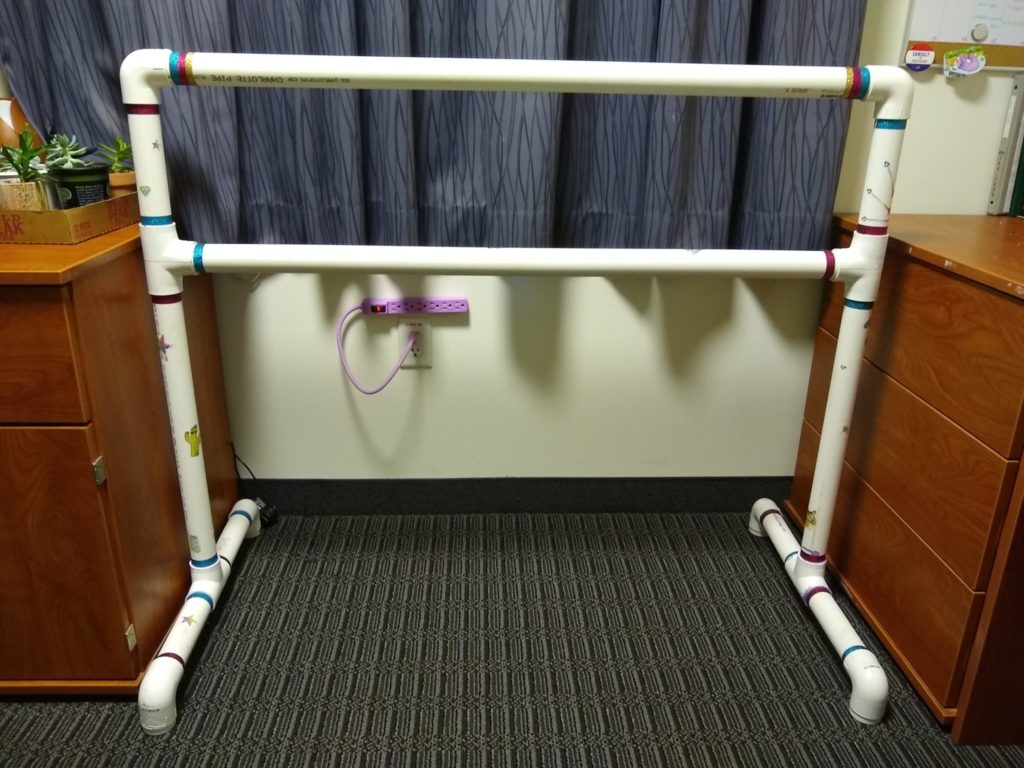
Photos: Elliot Benson; Elliot Benson’s barre with colored glitter tape
A fulfilling collaboration
For Harvey, Workman, and the scene shop crew, making the barres was time well spent as they know the barres will help students hone their craft this semester and for years to come.
“This kind of collaboration is what the performing arts is all about and I am happy to be a part of it,” Workman said.